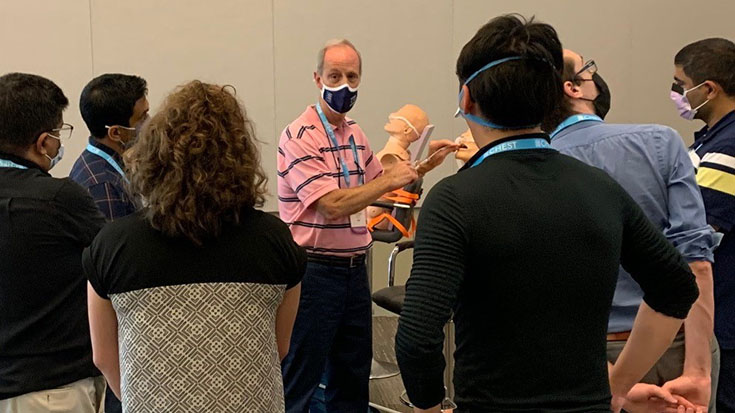
They say an ounce of prevention is worth a pound of cure, and that’s certainly the key premise behind a relatively new concept called “workplace wellness.” Essentially, these initiatives are designed to keep workers as happy and healthy as possible so that burnout, and all the detrimental effects that go along with it, is headed off at the pass.
AARC member Andrew Miller, BS, RRT, who spoke on “Battling Burnout in Respiratory Care” at the AARC Congress in New Orleans last fall and has been involved with resilience efforts at Duke University Medical Center, believes it’s a concept that should be embraced by respiratory care departments.
Key components
According to Miller, workplace wellness starts on the organizational level.
“I would define workplace wellness as the organization being genuinely interested in each individual employee being their best self,” he said.
That means looking out for the physical and mental health of every worker and taking a “whole person” view rather than just an “employee” view of the individual. Key components include creating psychological safety, trust in leadership, and a caring culture while promoting work-life balance.
Miller says organizations that incorporate these concepts into daily work life end up with higher staff satisfaction, lower turnover, and fewer workers who suffer from burnout.
“Most importantly, these efforts will translate into better care for patients, which is the reason we are in this business,” he adds.
Six strategies for success
What specific measures can respiratory care departments take to promote workplace wellness? Miller offers six great suggestions –
- Self-scheduling: This can help with work-life balance and give people a sense of control over when they work.
- Personal/respite days: Remove the stigma from people needing to take a day off for mental health. I think people often feel judged when they take a day for themselves. No one judges someone who has the flu, but people who are overwhelmed emotionally often feel judged.
- Healthy lifestyles: Many hospitals have programs to help people live healthier lifestyles by changing their eating habits, exercising more, practicing stress-reduction techniques, taking advantage of mental health support, and quitting smoking (yes, there are still RTs who smoke!). Helping nightshift or rotating workers with sleep hygiene and strategies to cope with the associated physiologic challenges may help too.
- Staff respite room: Having a private place to disconnect from the hospital can be helpful, especially in the critical care environment where alarm fatigue is a major problem.
- Wellness/resilience tools: Three Good Things, practicing gratitude, random act of kindness, gratitude letters, etc. — these activities are billed as resilience activities but are really wellness tools.
- Individual strategies: Learning to use strengths, mindfulness training, yoga, and meditation classes are good tactics too.
“Many of the resilience/burnout activities are really wellness activities that positively impact not only our work lives but also our personal lives,” he said. “People who are happy at work are more likely to be happy at home and vice versa; recognizing this fact can help us provide support to people who are struggling.”
Growing trend
Workplace wellness continues to grow in all types of industries and health care is no exception. It just makes sense.
Keep the conversation going
How are you helping improve workplace wellness? Share your thoughts and best practices with your colleagues on AARConnect.
Looking for more workplace wellness resources? Andrew Miller suggests you check out these Resilience Tools on the Duke Center for HealthCare Safety and Quality website. Duke also offers Enhancing Caregiver Resilence Courses that are open to managers and clinicians outside of the Duke system.
Email newsroom@aarc.org with questions or comments, we’d love to hear from you.














